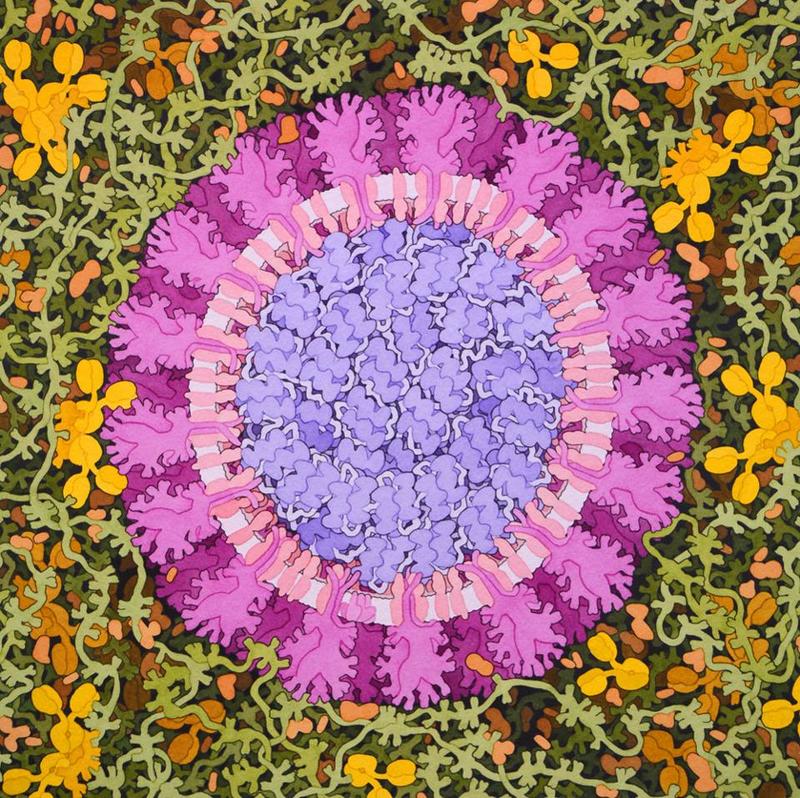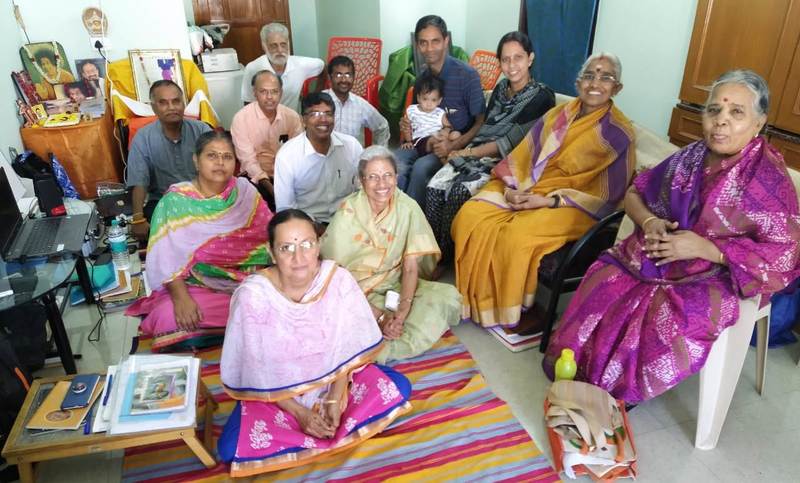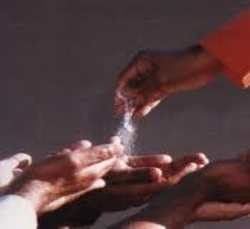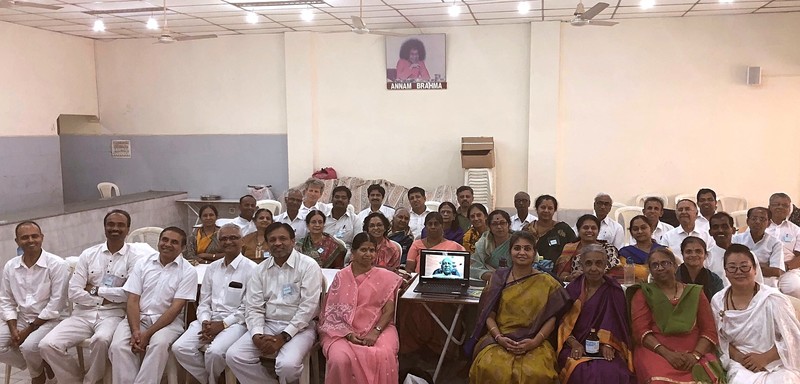In Addition
Vol 11 号 2
March/April 2020
-
Health tips
COVID-19 – Prevention and care
“It is man alone who is subject to the most health-related trouble. A number of human diseases are on the increase. The reason is that man does not like to partake of food as God created it…” Sri Sathya Sai Baba1
1. What is novel coronavirus?
 Coronaviruses are a large group of viruses, transmitted between animals and people. Several of them prevalent amongst animals have not yet infected humans. The SARS-CoV (Severe Acute Respiratory Syndrome virus) that spread in 2003 first identified in China was a coronavirus, from civet cats to humans. MERS-CoV (Middle East Respiratory Syndrome) identified in Saudi Arabia in 2012 was also a coronavirus transmitted from camels. Even the common cold one faces often is due to a mild virus from the same family.2,3,4,5
Coronaviruses are a large group of viruses, transmitted between animals and people. Several of them prevalent amongst animals have not yet infected humans. The SARS-CoV (Severe Acute Respiratory Syndrome virus) that spread in 2003 first identified in China was a coronavirus, from civet cats to humans. MERS-CoV (Middle East Respiratory Syndrome) identified in Saudi Arabia in 2012 was also a coronavirus transmitted from camels. Even the common cold one faces often is due to a mild virus from the same family.2,3,4,5
Above is a painting of novel coronavirus by a computational biologist2
In December 2019, there was a cluster of pneumonia cases in China. Investigations found they were caused by an unknown virus, initially referred to as 2019 novel coronavirus (2019-nCoV).This is a new strain not previously identified in humans. The UN health agency announced on 11 February 2020 that “COVID-19” will be the official name of this deadly virus from China, stating that the disease represented a “very grave threat” for the world but there was a “realistic chance” of stopping it. What is known now about this virus might change as studies and research are ongoing.3.4,5,6
According to many infectious-disease experts of the world, this novel virus from China is likely to become a pandemic that circles the globe. The virus could reach most "if not all countries", the World Health Organization has warned. Scientists do not yet know how lethal the new virus is but there is a growing consensus that the pathogen is readily transmitted between humans. Also, it is spreading more like influenza than its slow moving viral cousins, SARS and MERS.7
2. Common signs of COVID-19
At first glance, symptoms for this virus may appear similar to those of common cold or flu. These symptoms can include fever, dry cough, shortness of breath, breathing difficulties, and in some cases abdominal pain, aching muscles, and fatigue; less typical ones include phlegm build-up, coughing-up blood (haemoptysis), and diarrhoea. In severe cases, infection can cause pneumonia, severe acute respiratory syndrome, kidney failure, and even death. This virus cannot be diagnosed based on symptoms alone. Laboratory tests are required to confirm if someone has this novel virus.3,4,5,8 Many of those infected initially showed no symptoms. According to reports the new virus has an incubation period of 14 days but it may even be 27 days. If one is not sure what one has and is concerned, a phlegm sample analysis from a health care professional will determine the presence or absence of respiratory virus.8,9
3. How does COVID-19 spread?
The exact dynamics are yet to be determined. The new virus spreads primarily by contact with an infected person through respiratory droplets generated when a person coughs or sneezes or through droplets of saliva or discharge from the nose. There is currently no evidence to suggest that it is airborne. It also spreads through contaminated surfaces touched by hands.3,4,5
4. Protective measures
Follow good personal hygiene practices and simple preventive measures, namely:3-5,8,10-14
- Wash hands regularly with soap and running water (or hot water) or use an alcohol-based hand rub, even if your hands are not visibly dirty, as washing eliminates the virus on hands. Hand towels, in particular, should be clean or one may use disposable towels for drying hands after washing.
- Cover your mouth and nose with flexed elbow or tissue or a mask or cloth while coughing and sneezing. Discard the tissue or mask or cloth immediately into a closed bin and clean your hands to prevent contamination of objects and people you touch.
- Maintain a distance of 1 metre (3 feet) with anyone showing symptoms of respiratory illness such as coughing and sneezing. A cough or sneeze projects small droplets containing the virus. You can breathe in the virus if you are too close. Touching or shaking hands with a person can pass the virus. Avoid unnecessary contact with animals too and wash hands after touching animals. Also, avoid contact with potentially contaminated animal waste or fluid on the soil or market facilities in animal or animal product markets.
- Do not touch your face, especially eyes, nose, and mouth as your hands may have touched a contaminated surface. The most common virus carriers are digital devices like mobile, laptop and mouse, knobs and handles on doors, tables, and chairs, lift buttons, stair banisters, etc, including the outside surface of face mask.
- Stay at home if feeling unwell and avoid travel. If you must go out, wear a surgical mask with the coloured side facing out. If you have fever, cough, or difficulty in breathing, seek medical care immediately.
- Use a mask if you are a care provider whenever in the same room, but use and discard it properly and remember to wash hands. Masks alone will not protect unless combined with hand hygiene and other preventive measures.8,10
- Instill two drops of sesame oil in each nostril every morning to keep the nostrils lubricated and free of impurities, as suggested by the Ministry of AYUSH, Government of India, based on advice from ayurvedic experts.11
- It is strongly recommended that you take the following preventive supplements daily: Vit-C 3g in divided dosages, Vitamin D3 2000 IUs, magnesium 400 mg, zinc: 20 mg, selenium: 100 mcg.14
5. Treatment with Vibrionics
In view of the pandemic situation caused by the outbreak of COVID-19 virus, here are the guidelines for Vibrionics practitioners.
Practitioners will continue to render Seva proactively from individual homes. WHO has stressed that fundamental public health interventions can still limit the spread of the virus and drive down cases even where it was transmitting widely, as the work of authorities and communities in China, Singapore, and South Korea has shown. It is, therefore, advised that practitioners should concentrate more on hands-on demonstration of preventive healthcare such as avoiding crowded areas, washing hands and following cough etiquette.
As this virus is an unknown entity, new information flows in daily. So we are having to revise our combos, keeping in mind that some patients don’t exhibit symptoms at all and if they do, maybe after several days of having been infected. We have made a single combo, both for prevention and treatment and only the dosage is different. Preventive remedies as advised below may be dispensed to patients and their families directly by the practitioner himself who should stress upon the patients to strictly adhere to the protocol and guidelines issued by WHO and their local health authority. Remember to label the remedy bottle “Immunity booster”. Under no circumstances, these remedies should be distributed in bulk.
For 108CC box users: CC4.1 Digestion tonic + CC4.8 Gastroenteritis + CC9.4 Children’s diseases + CC10.1 Emergencies + CC13.1 Kidney & Bladder tonic + CC15.1 Mental & Emotional tonic + CC19.3 Chest Infections chronic + CC19.6 Cough chronic + CC19.7 Throat chronic.
For SRHVP users: NM6 Calming + NM76 Dyspnoea + NM113 Inflammation + BR4 Fear + BR14 Lung + SM26 Immunity + SM27 Infection + SM31 Lung & Chest + SM40 Throat + SR270 Apis Mel + SR271 Arnica 30C + SR272 Arsen Alb 30C + SR277 Bryonia 30C + SR291 Gelsemium 30C + SR298 Lachesis + SR301 Mercurius 30C + SR302 Nux Vom 30C + SR306 Phosphorus 30C + SR385 Eupatorium Perf + SR406 Sabadilla 30C + SR505 Lung.
The dosage in both cases is the same: OD on waking, as preventive; TDS in case of suspected infection (mild symptoms such as a slight cough). For a patient diagnosed with COVID-19, one dose every hour for 6 doses, followed by 6TD, reducing slowly on improvement. Any allopathic treatment should be continued and NOT discouraged at any time.
Keeping in view the threat of community spread of COVID-19 virus, until further instructions, no Vibrionics camps will be undertaken.
Protective measures
These are already described in the article on Coronavirus in the “In Addition” section of our newsletter Vol 11 #2, Mar-Apr 2020. All are advised to read https://www.cdc.gov/coronavirus/2019-ncov/prepare/prevention.html and to comply with instructions therein.
Very little is known about this virus. No specific medication or vaccine has come to the fore so far. No case has been treated with Vibrionics as yet. Before giving a remedy to somebody we must strongly recommend that on any suspicion, the patient must be advised to seek medical help immediately; in addition, the practitioners should themselves take due precautions.
Golden Formula: Keep immunity up with proper life style, diet, exercise in fresh air, exposure to sunlight, and prayers for the wellbeing of all. Adhere to best personal hygiene and preventive measures, don’t panic.
References and Links:
- Health, Food, and Spiritual disciplines, Divine Discourse 8 October 1983, Sathya Sai Newsletter, USA, vol 8-4, Sathya Sai Baba Speaks on Food, Sri Sathya Sai Sadhana Trust Publication, December 2018, page55
- Painted picture of novel coronavirus: https://www.forbes.com/sites/evaamsen/2020/02/10/what-does-a-coronavirus-look-like/#3f2c5d753c7f
- World Health Organisation site: https://www.who.int/health-topics/coronavirus; https://who.int/emergencies/disease/novel-coronavirus-2019
- Q&As on coronavirus: https://www.who.int/news-room/q-a-detail/q-a-coronaviruses
- Official statement on virus in China: https://www.youtube.com/watch?v=mgc_K2x-GKA
- https://www.who.int/dg/speeches/detail/who-director-general-s-remarks-at-the-media-briefing-on-2019-ncov-on-11-february-2020
- Coronavirus pandemic: https://www.nytimes.com/2020/02/02/health/coronavirus-pandemic-china.html
- Symptoms: https://www.dw.com/en/coronavirus-cold-or-flu-symptoms-how-to-tell-the-difference/a-52233885
- Incubation period: https://www.dw.com/en/how-long-is-the-coronavirus-incubation-period/a-52569944
- Protective measures against the new virus: https://www.who.int/emergencies/diseases/novel-coronavirus-2019/advice-for-public
- How to use masks: https://www.who.int/emergencies/diseases/novel-coronavirus-2019/advice-for-public/when-and-how-to-use-masks
- AYUSH site https://pib.gov.in/PressReleasePage.aspx?PRID=1600895
- Measures conveyed through music: https://www.youtube.com/watch?v=mP-mCfo4-f8
- Preventive supplements: https://www.peakprosperity.com/forum-topic/supplement-support-against-coronavirus
2. Refresher Seminar Chennai, India, 18-19 January 2020
A two-day refresher seminar attended by 14 practitioners from Tamil Nadu (including 2 via zoom), was hosted by practitioner11561 at her residence in Chennai. Apart from the course teacher11422, the seminar was also addressed via zoom by another senior teacher10375 (on model clinic), and Hem Aggarwal (on case histories) and Dr Jit Aggarwal. The highlights were:
- Each participant presented one of their difficult cases which was discussed at length under the guidance of the course teacher. This session was followed by a live clinic on multiple chronic cases.
- Importance of case histories and how best they can be presented for publication was explained. There was also a practical session on writing a good case history.
- Dr Aggarwal guided on how to tackle difficult cases. He inspired the participants to stay connected with Swami through unwavering faith and to work from the heart with a sense of surrender to Him, always remembering that we are merely His humble instruments and He is the only Healer. If a patient is still not cured, it is the Will of God. Emphasizing that unhealthy life style was the major cause of ailments, he suggested “self-healing by detachment” that he was practising. Also, he indicated how to replace a negative thought with a positive one by recalling, for example, loving memories of Swami in our lives.
Having updated their knowledge of Sai Vibrionics practices, the participants reaffirmed their commitment to this seva before leaving.

3. Refresher Seminar, Bengaluru, India, 8-9 February 2020
A highly interactive two-day refresher seminar attended by 34 practitioners from Karnataka was organised by the Bengaluru team, and conducted by our senior teacher 10375, with model clinic and case studies, at Brindavan in Whitefield. Many participants had completed their training long time back and were keen to update their knowledge and resume their practice. An abridged simple AVP course manual on vibrionics was specially designed for this occasion. Different aspects of patient treatment, more specifically, how vibrionics remedy can help build immunity and how it can be used as eye, ear, and nasal drops were discussed. The participants were guided on how to write case histories and the importance of keeping proper patient record, for lending authenticity to their successful cases for publishing them for the benefit of all readers.
The participants were delighted when Sri Nagesh Dakappa, the State President of SSSSO of Karnataka, despite his very busy schedule, made his appearance as a special invitee. In his inspiring and emotionally-charged address, he reminisced about his interaction with Swami when He directed him to help organise the first vibrionics workshop in Bengaluru in 2009 and also subsequent ones and to start a clinic in Brindavan.
Dr Jit Aggarwal in his address motivated the practitioners to connect with Swami with one-pointed concentration and pursue vibrionics as a noble service for self-transformation. Practising vibrionics is a unique seva as the entire world is slowly moving towards complementary therapies with no side effects. He stressed, as we are not medical doctors, we have to invest a lot of time and effort to build up our skills to treat patients.
Two practitioners shared their experience of the power of vibrionics in curing a case of mouth cancer in 4th stage, cases of HIV and a case of deformity of a spina bifida child. By the end of the workshop not only their 108CC boxes were recharged but also the practitioners themselves felt charged with a renewed enthusiasm to do selfless service!

